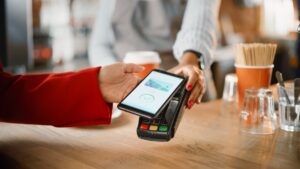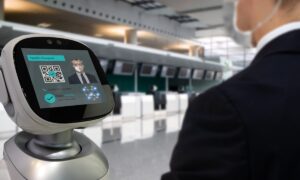Can Human Ingenuity Make the World a Better Place?
by Mike Logan, Senior Product Manager, Anders Electronics
Our response to the pandemic offers many examples of how our ingenuity helped combat the crisis: we saw leading high-tech companies quickly refocus their resources on developing cost-effective ventilators to aid treatment, our biotech developed protective vaccines extremely quickly, and contactless payment technology showed its effectiveness as a means of blocking transmission.

As we all now work out how to live with COVID in the long-term, it’s wise to continue improving the tools at our disposal for prevention and cure. This includes developing safer interactions with the equipment that makes modern life work, such as ticketing machines, kiosks, payment terminals, interactive signage, elevator controls, machinery control panels, door openers and access-control systems. Even appliances like coffee machines, washing machines, and microwaves, particularly where these are used in communal areas like offices, break rooms, and shared laundry rooms.
What are the prospects for extending touchless interaction?
Several approaches could be feasible. New equipment could be designed around interaction through personal mobile devices, perhaps using NFC, Bluetooth, or a QR code, to avoid touching surfaces that are publicly accessible. But there are limitations: what if your mobile is inaccessible to open that door or use an elevator; isn’t it frustrating when you are asked to install an app when you want to do a simple task?; what if your battery is out of charge or you have simply forgotten to bring your mobile out with you, and then there are those who don’t want to carry a smart device at all.

Alternatively, multi-point time-of-flight ranging is emerging as a sophisticated means of sensing context and detecting user proximity. In applications like building security, this technology could be combined with biometric sensing such as facial recognition to manage access privileges and automatically open the door for authorised users.
In addition, several technologies have been put forward that enable touch-free interactions with applications typically fronted by a touchscreen user interface. Gesture control is an exciting concept for automotive designers, who see the opportunity to simplify interaction with the vehicle and improve safety by allowing drivers to do things like change radio station or adjust the temperature setting by waving a finger without averting their eyes from the road. Gesture control is also great for use in smart buildings, to let users easily optimise HVAC settings, lighting, or audio volume.

Now there is another option: a touchless technology which lets users enact their choices by holding a finger over their selection at a distance up to 50mm. This is an evolution of capacitive touch, allowing gesture control utilising similar principles and similar display stack-up that comprises a substrate, shield layer, sensor layer, bonding layer and coverlens on top of the LCD. This technology uses a refresh rate in the order of 100 Hz and so is not challenging even for a deeply embedded application. it is also known to meet the stringent EMC/EMI specifications of automotive OEMs.
How could Touchless Technology Inspire Creative HMI Designs?
Touchless gesture control could be adopted in a wide range of applications, such as control panels, vending machines, Electric vehicle chargers, and many others that could help banish virus transmission hazards from our everyday lives and make gadgets cooler and more fun to use. There are also automotive use cases, ranging from electric-vehicle chargers to in-car controls.

Although touchless control is obviously closely related to conventional touch, its arrival is sure to drive innovative approaches to HMI design. Examples could include creative use of sounds, animations, or haptic effects to optimise the user experience.
At Anders, we are excited to explore the intriguing possibilities touchless gesture control has to offer. We are already working with our portfolio of leading suppliers to bring this promising new technology to the market.
Stay tuned/watch this space/contact us for more information.
About Anders
Anders Electronics is a display and embedded display design specialist, dedicated to making electronic touchscreen technology safer, simpler, and more enjoyable to use.
Over 30 years ago, Anders started designing, developing, and delivering customised display solutions, for the non-consumer industry, and haven’t stopped innovating since! Anders features a history of reliability and innovation and lives to solve display engineering challenges.
Anders harnesses their expertise in display, embedded computing, and touch control technology to help differentiate their customer’s products through exceptional design and engineering.